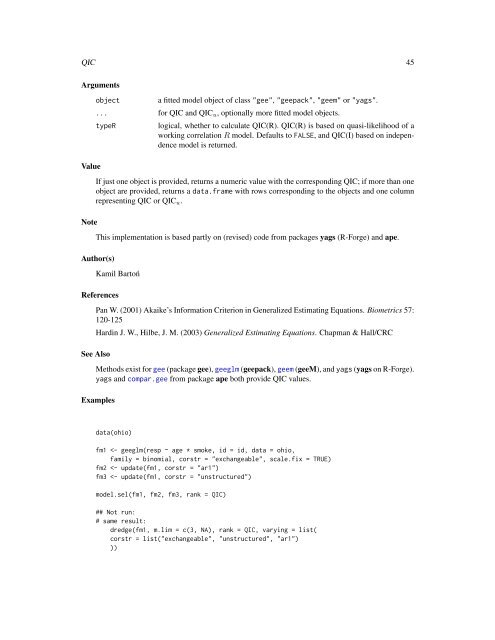Package ‘MuMIn’
Package 'MuMIn'
Package 'MuMIn'
You also want an ePaper? Increase the reach of your titles
YUMPU automatically turns print PDFs into web optimized ePapers that Google loves.
QIC 45<br />
Arguments<br />
Value<br />
Note<br />
object<br />
a fitted model object of class "gee", "geepack", "geem" or "yags".<br />
... for QIC and QIC u , optionally more fitted model objects.<br />
typeR<br />
logical, whether to calculate QIC(R). QIC(R) is based on quasi-likelihood of a<br />
working correlation R model. Defaults to FALSE, and QIC(I) based on independence<br />
model is returned.<br />
If just one object is provided, returns a numeric value with the corresponding QIC; if more than one<br />
object are provided, returns a data.frame with rows corresponding to the objects and one column<br />
representing QIC or QIC u .<br />
This implementation is based partly on (revised) code from packages yags (R-Forge) and ape.<br />
Author(s)<br />
Kamil Bartoń<br />
References<br />
Pan W. (2001) Akaike’s Information Criterion in Generalized Estimating Equations. Biometrics 57:<br />
120-125<br />
See Also<br />
Hardin J. W., Hilbe, J. M. (2003) Generalized Estimating Equations. Chapman & Hall/CRC<br />
Methods exist for gee (package gee), geeglm (geepack), geem (geeM), and yags (yags on R-Forge).<br />
yags and compar.gee from package ape both provide QIC values.<br />
Examples<br />
data(ohio)<br />
fm1


